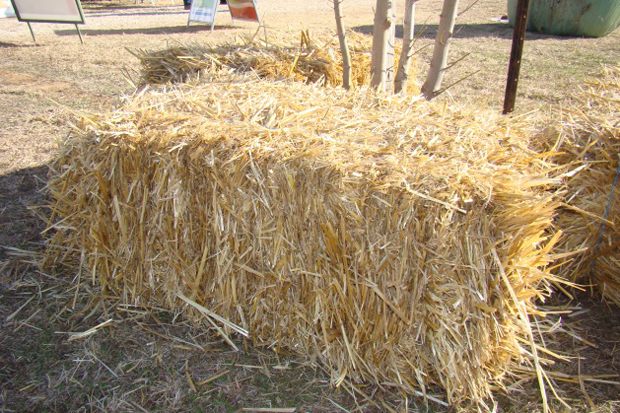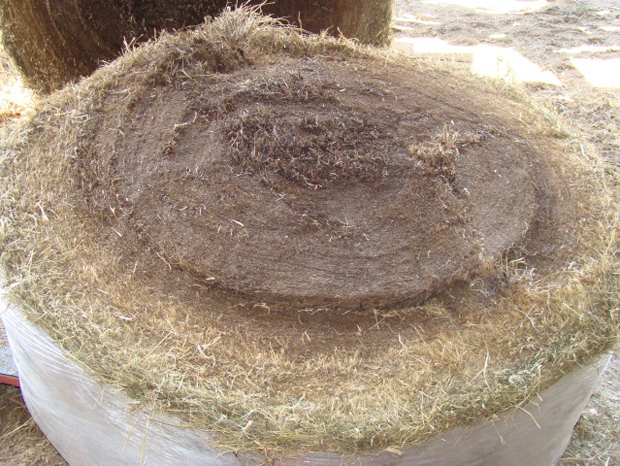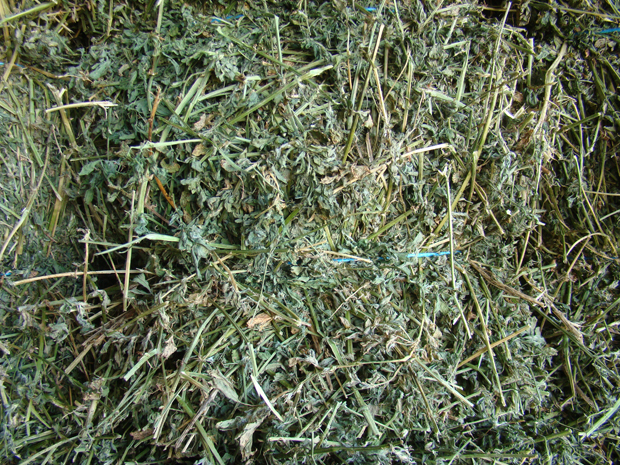
Using hay or silage to feed drought affected stock
In spring 2018, feed stocks are extremely low and this has forced producers and charities to seek hay and silage from anywhere in Australia that it is available. As a result, a lot of low quality fodder is being sourced because “Anything is better than nothing”. This factsheet includes information about their role in drought feeding.
Hay quality
Hay sourced from the NSW North Coast, Queensland and other northern areas are generally made from tropical grasses such as Rhodes grass, setaria, kikuyu, paspalum etc. They are lower quality compared to other hays that are made from cereal (wheat, oats, barley) and canola crops.
Tropical grasses only grow during late spring, summer and autumn so hay made during late winter and spring harvests the rank growth from previous years. This hay is typically light brown, very dry, has lots of stems, seedheads (but no seeds), few leaves and is very light.
While hay quality is on a sliding scale, any that is tested and has metabolisable energy less than 7.5M/D, crude protein less than 7% and digestibility less than 50% can be considered low quality.
The role of low quality roughage

Low quality hay, straw, stubble, sugar cane, rice hulls etc have a useful ‘comfort’ factor to fill animals up. They improve the safety of feeding grains or unusual feeds, eg citrus or vegetables. They are also essential for producers feeding concentrates such as white cottonseed, molasses + urea, or large amounts of grain ie ‘feedlot’ diets.
But they are NOT suitable for long term feeding to stock without the addition of some energy and protein sources such as those mentioned above.
Stock factors
Dry cows, heifers and steers can survive on low quality hay. They will likely be losing weight so it follows that if they are already skinny then they will soon run out of energy and can die. Adding grain, distillers dried grain, white cottonseed, protein meal or other concentrate can provide a suitable maintenance ration.
Early weaned calves also benefit from a roughage component but low quality hay is not suitable. Lactating cows must have dietary roughage but low quality hay is not suitable for them in large quantities.
Even hungry stock will not readily eat low quality roughage- they will pick through it but mostly waste it. This is partly due to low palatability but also due to low digestibility (they are full).
Hay vs silage

Hay is usually a more efficient purchased feed because it has around 10% water while silage has up to 60%. Silage must be remain sealed, to exclude air. Once the seal is broken, eg a hole in the plastic or the silage is opened, then it will start to heat and spoil.
Colour
Colour is an indicator of feed quality. A bright green colour indicates that the hay was preserved quickly, retaining as much feed value as possible.
Light brown or bleached hay indicates the forage was exposed to sun and may have lost feed quality unless it dried quickly.
Dark brown hay or silage indicates that the hay or silage has heated excessively and will have lost feed value. This hay or silage may be palatable but have low feed value.
Smell

Smell is also an indicator of good hay or silage. Good hay will smell fresh and sweet while good silage has a sweet, acid smell.
Dust and mould smells indicate lower quality hay or silage. Care must be taken as smelling moulds can also affect human health risk, e.g. moulds. Note also that feeding mouldy or high risk hay or silage can affect sheep or pregnant animals as they are more susceptible to health problems, particularly listeriosis.
Other odours can indicate weed problems, while a burnt caramel smell can indicate overheating.
Hay is notorious for spreading weed seeds and where possible, should be fed to stock in a confined area which can be checked in future. Silage fermentation can reduce the risk of spreading viable weed seed but this cannot be guaranteed.
